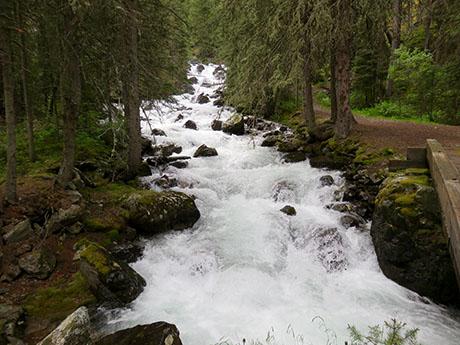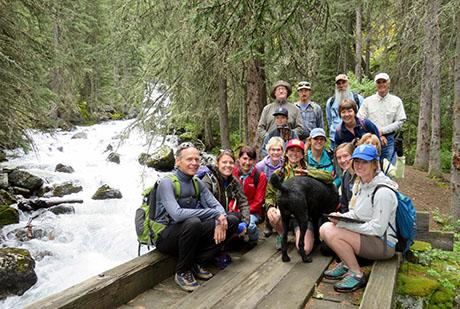Walking for Wilderness
Hiking with the Montana Wilderness Association.
In southwest Montana, we're surrounded by beautiful landscapes like Hyalite Canyon, the Pine Creek drainage, and the Bridger Range. Sometimes, it can be easy to take our access to this public land for granted, but no matter how we recreate, it's important that we conserve this resource that has fostered so many of our adventures (and sometimes, our misadventures). One way to do that is with the Montana Wilderness Association’s (MWA) annual Summer Wilderness Walks, which encourage everyone to protect the environment by enjoying the land and learning about its history.
Recently, I had the pleasure of going on the Emigrant Gulch walk near Chico Hot Springs, about 17 miles north of Yellowstone National Park. As we hiked along Emigrant Creek, our guides talked to us about the controversial gold mine, proposed by Lucky Minerals, Inc. If this Canadian company builds a mine near Emigrant Creek, Park County visitors and residents could lose access to large amounts of public land in the Absarokas, and mining would pollute Emigrant Creek, a tributary of the Yellowstone. Chico, which employs about 180 people, could also be adversely affected; mining could disrupt the clean, hot, water Chico depends on. To make matters worse, Lucky Minerals plans to extract gold from sulfide-bearing rock, and when the sulfides are exposed to water and air, they form sulfuric acid. This acid is toxic to fish and other aquatic life, which could infect the hot springs, and more importantly, the Yellowstone River. Should the Yellowstone become contaminated, the mine's impact would damage the economy and spoil public and private lands for fishing, hunting, and ranching long after operations cease.
This particular Wilderness Walk contributed directly to the protection of Emigrant Gulch because the more MWA can prove that people are enjoying the land, the harder it becomes for Lucky Minerals to destroy it. Michelle Uberuaga Zanoni, one of the trip leaders, described the purpose of these walks: “The hikes are important because they allow us to get out and explore the land we want to protect, while also giving us a sense of ownership over our wild back yard.”
Before going on the walk, I did some research about the potential Emigrant Gulch mine, and I felt like I understood the problem. However, it wasn't until I went on the walk that I actually felt the injustice of the issue. As I hiked along the well-maintained trail, I listened to the roaring rapids of Emigrant Creek and marveled at the snowy mountain peaks in the distance. When we stopped for a water break, one of our guides pointed to a rocky peak where she likes to ski in the winter. Her face lit up as she told us about the incredible powder on the deserted slope. Soon enough, everyone was sharing ski and snowshoe adventures and mishaps.
As Michelle explained to us, these lands are valuable because they are a part of us: they foster our adventures, challenge our abilities, teach us new things, and give us great stories. Yes, there is value in gold, but what could possibly be more prized than this beautiful land and our unique experiences on it?










